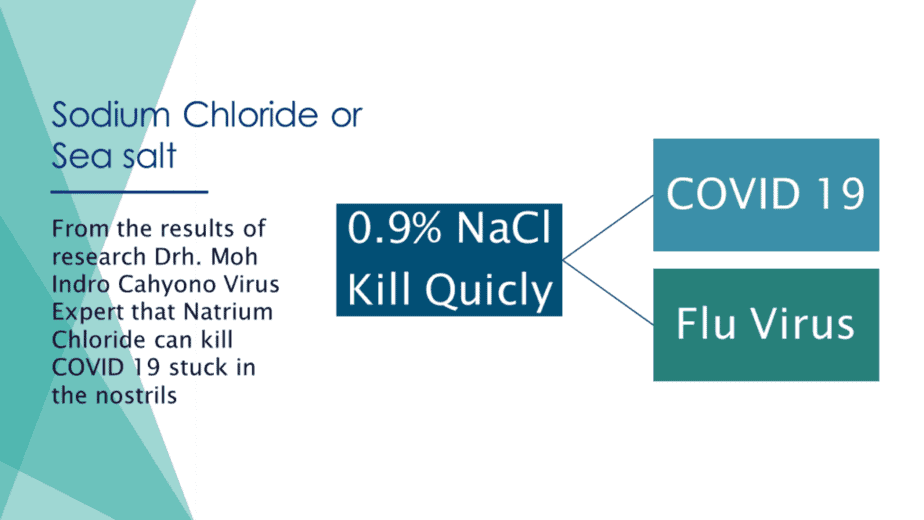Get to Know More About Viral infections. It has been almost 2 years since the coronavirus affected the whole world. This dangerous virus has been killing so many lives, making people more aware of their health. Besides getting more aware of our health, we should also know more about viral infections. By knowing about it, we will not panic and will know what should do when we get infected.
 What are Viral Infections?
What are Viral Infections?
Viral infections are the condition when viruses get inside the body then multiply themselves, causing diseases. Viral infections can affect various parts of the body such as the nerves, skins, digestive system, and respiratory system. It depends on the type of virus that infects. So, there are many types of viral infections. Most viral infections are transmitted from person to person. For example, HIV, flu, and herpes.
On the other hand, some other types of viral infections are transmitted through animal bites or objects that are contaminated with the virus. Virus itself is a microscopic organism consisting of proteins and shields. Viral infections can cause different symptoms, depending on the types of the virus as well as body organs affected. However, this condition has general symptoms like fever, weakness, and muscle and joint pain.
The treatment given also depends on the causes and how severe the symptoms are. The virus transmission can be prevented by avoiding exposure, factors that increase the risk of transmission, and vaccination.
How Common are Viral Infections?
Viruses are the cause of infectious diseases, such as flu, cold, diarrhea due to stomach or intestine inflammation, and so on. Viruses that cause these diseases are usually easy to transmit. However, some types of viruses can also cause other uncommon diseases. The medium of transmission such as droplets, blood, other body fluids, and the resistance of the virus can be a factor that determines how quickly the virus spreads.
When Should You Go See the Doctor?
When you are sick due to viral infections, you need to monitor the symptoms you are experiencing. If the symptoms do not get better within a few days, you better see your doctor as soon as possible. So, you can immediately get the right, proper treatment. You should immediately see doctors and get medical treatment if you have these following symptoms:
- Severe headache.
- Dehydration.
- Fever continues or rises to 38 degrees Celsius.
- Difficult to breathe.
- Constant vomit.
- Severe pain in the infected body part.
Non-iodized salt (0.9% NaCL) kills COVID 19 in the nose, Dental Pro 7 kills harmful bacteria in your mouth
Diagnosis of Viral Infections
 Doctors can suspect that a patient is suffering from a viral infection if they see a number of symptoms that have been described before. But in some cases of viral infections, doctors will perform several tests, such as:
Doctors can suspect that a patient is suffering from a viral infection if they see a number of symptoms that have been described before. But in some cases of viral infections, doctors will perform several tests, such as:
- Complete blood counts. This test is performed to determine the number of white blood cells. It is because the number of white blood cells can increase or decrease due to a viral infection.
- CRP or C-Reactive Protein. This test is purposed to measure the level of c-reactive proteins produced in the liver. Typically, the CRP level of someone affected by viruses will increase, but not more than 50mg/L.
- PCR or Polymerase Chain Reaction. The PCR test is purposed to separate and duplicate viral DNAs so that doctors can identify the type of the infecting virus more precisely and more quickly. This PCR test can also be used to detect infections caused by the herpes simplex virus and varicella zoster.
- ELISA or Enzyme-Linked Immunosorbent Assay. This test aims to detect antibodies in the blood associated with viral infections, such as the HIV virus, varicella zoster virus, hepatitis B virus, and hepatitis C virus. Viral infections are particularly not dangerous. You can even treat it with cross salt or Sea salt/ Non-iodized salt/Sea salt/0,9%NaCl
https://youtu.be/7ibDsqOfKpg
Types of Salt: Himalayan vs Kosher vs Regular vs Sea Salt
Source article : https://www.healthline.com/nutrition/different-types-of-salt
Salt is arguably one of the world’s most important cooking ingredients. Without it, many meals would taste bland and unappealing. However, not all salt is created equal. There are many varieties to choose from. These include table salt, Himalayan pink salt, kosher salt, sea salt and Celtic salt, just to name a few. Not only do they differ in taste and texture, but also in mineral and sodium content. This article explores the most popular salt types and compares their nutritional properties.
What Is Salt?
Salt is a crystalline mineral made of two elements, sodium (Na) and chlorine (Cl). Sodium and chlorine are essential for your body, as they help your brain and nerves send electrical impulses. Most of the world’s salt is harvested from salt mines or by evaporating seawater and other mineral-rich waters. Salt has various purposes, the most common being to flavor foods. Salt is also used as a food preservative, as bacteria have trouble growing in a salt-rich environment.
The reason that salt is often deemed unhealthy in large amounts is that it can raise blood pressure. Studies suggest that lowering salt intake can reduce blood pressure by up to 5.4 mmHg (1Trusted Source). However, several meta-analyses have shown that both low-sodium (<3 g/day) and high-sodium (>5 g/day) diets are linked with increased cardiovascular events and death (2Trusted Source, 3Trusted Source, 4Trusted Source).
The vast majority of sodium in the Western diet comes from processed foods. If you eat mostly whole, unprocessed foods then you don’t need to worry about adding some salt to your meals.Refined Salt (Regular Table Salt)
The most common salt is regular table salt.
This salt is usually highly refined — meaning that it’s heavily ground, with most of its impurities and trace minerals removed.
The problem with heavily ground salt is that it can clump together. For this reason, various substances — called anti-caking agents — are added so that it flows freely.
Food-grade table salt is almost pure sodium chloride — 97% or higher — but in many countries, it also contains added iodine.
The addition of iodine to table salt is the result of a successful public health preventative measure against iodine deficiency, which is common in many parts of the world.
Iodine deficiency is a leading cause of hypothyroidism, intellectual disability and various other health problems (5Trusted Source, 6).
Therefore, if you choose not to eat regular iodine-enriched table salt, make sure you’re eating other foods that are high in iodine, such as fish, dairy, eggs and seaweed.
Sea Salt
Sea salt is made by evaporating seawater.
Like table salt, it is mostly just sodium chloride. However, depending on its source and how it was processed, it usually contains various trace minerals like potassium, iron and zinc.
The darker the sea salt, the higher its concentration of impurities and trace nutrients. However, due to ocean pollution, sea salt can also harbor trace amounts of heavy metals like lead.
Sea salt also contains microplastics — the microscopic remains of plastic waste. The health implications of microplastics in food are still unclear, but some researchers believe that health risks are low at current levels (7Trusted Source).
Unlike regular refined salt, sea salt is often coarse, as it’s less ground. If you sprinkle it on your food after cooking, it may have a different mouthfeel and cause a more potent flavor burst than refined salt.
The trace minerals and impurities found in sea salt can also affect its taste — but this varies greatly between brands.
